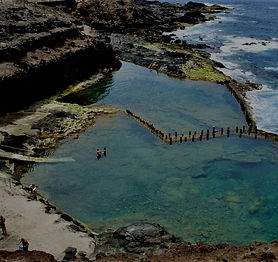
Geography and Climate
The island of eternal Spring
Gran Canaria is one of the Canary Islands, of volcanic origin, it is the third largest island and the second most populated island of the seven islands that make up the Macaronesia archipelago.
Its capital is Las Palmas de Gran Canaria, the largest city in the Canary Islands and metropolitan area. With just over 800,000 inhabitants, it is among the ten largest metropolitan areas in Spain.
the island of Gran Canaria is characterized by about 100 different micro climates; for this reason it is also called "the miniature continent"; what makes this island fascinating is in fact that with short trips by car you can meet very different and contrasting climatic and environmental contexts.
The climate that affects the coasts is of an oceanic subtropical type; the result is a very sunny area and mild temperatures for most of the year, a temperate and dry summer while the sporadic rains are concentrated in the period November - March.
In inland areas, the climate varies according to altitude, orientation and exposure to winds. Also due to the important promontories that reach 2,000 meters above sea level and which therefore perform an important function of natural barrier

Background
From the guanche to today
The island was inhabited as early as 3000 BC by Guanches , who were indigenous Aborigines who called it Tamarán; In the 15th century, was claimed by the Spain.
In 2005 about half of the island of Gran Canaria has been declared Biosphere reserve by Unesco . The caves of the native inhabitants have also been declared a World Heritage Site.
Much of the relevant information on these issues can be discovered in the various archaeological sites and museums scattered around the island such as: La Cueva Pintada di Galdar. the archaeological museum of Roque Bentaiga and many other sites of interest.

What to see
Lots of places to visit and things to see and discover in this wonderful Tropical Island, especially what concerns Nature which in a miniature continent, offers a great variety of very particular landscapes, in the middle of an enormously different archipelago. For this reason, UNESCO has declared the island a Biosphere Reserve, to support the conservation of the natural pearls that make up the wonderful puzzle of very different landscapes, a truly fantastic microworld. Half of the territory of Gran Canaria is part of this Reserve, which includes six rural villages, which exist thanks to traditional activities. Below, we list the places, divided by category, of greatest interest but much more you can discover while experiencing the island.




